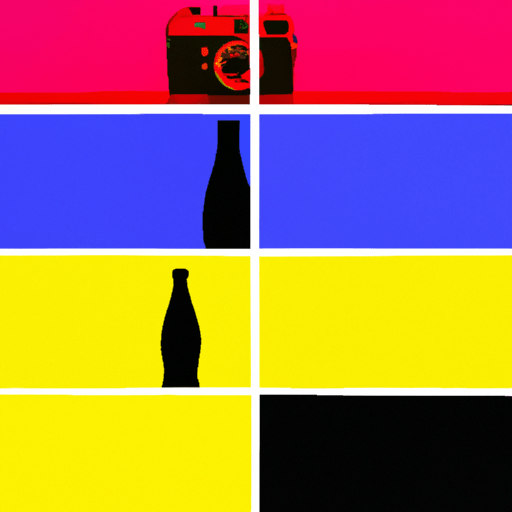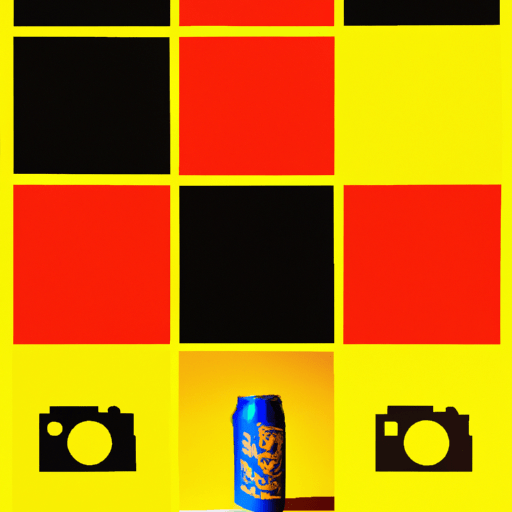
-
Table of Contents
- Exploring the Power of Negative Space in Design
- The Importance of Negative Space
- Techniques for Using Negative Space Effectively
- 1. Embrace Minimalism
- 2. Use Negative Space to Create Shapes
- 3. Pay Attention to Proportions
- 4. Experiment with Typography
- Real-World Examples of Negative Space in Design
- 1. Nike
- 2. Coca-Cola
- 3. WWF
- Summary
Exploring the Power of Negative Space in Design

When it comes to design, many people focus on the elements that are present – the colors, shapes, and images. However, what is often overlooked is the power of what is not there. Negative space, also known as white space, is the area around and between the elements in a design. It may seem empty, but it plays a crucial role in creating balance, harmony, and visual interest. In this article, we will delve into the world of negative space in design, exploring its importance, techniques for using it effectively, and real-world examples of its power.
The Importance of Negative Space
Negative space is not just an absence of content; it is an active element in design. It helps guide the viewer’s eye, creates a sense of hierarchy, and enhances the overall visual impact. Here are some key reasons why negative space is important:
- Enhances readability: Negative space around text makes it easier to read and comprehend. It allows the text to breathe and prevents it from feeling cramped or overwhelming.
- Defines relationships: Negative space helps establish relationships between different elements in a design. By creating space around an object, it can be emphasized and stand out from the surrounding elements.
- Improves focus: Negative space can draw attention to the main subject or message of a design. By surrounding it with empty space, the viewer’s eye is naturally guided towards the intended focal point.
- Creates balance: Negative space plays a crucial role in achieving visual balance in a design. It helps distribute the elements evenly and prevents the composition from feeling cluttered or unbalanced.
Techniques for Using Negative Space Effectively
Now that we understand the importance of negative space, let’s explore some techniques for using it effectively in design:
1. Embrace Minimalism
Minimalism is a design approach that focuses on simplicity and the use of negative space. By stripping away unnecessary elements, a design can achieve a clean and elegant look. Apple is a prime example of a company that embraces minimalism in its product design, packaging, and advertising. Their use of negative space creates a sense of sophistication and allows the products to take center stage.
2. Use Negative Space to Create Shapes
Negative space can be used to create shapes that enhance the overall composition. The FedEx logo is a famous example of this technique. At first glance, it appears to be a simple text-based logo. However, if you look closely, you will notice an arrow formed by the negative space between the “E” and the “x.” This clever use of negative space adds an extra layer of meaning to the logo and makes it memorable.
3. Pay Attention to Proportions
When using negative space, it is important to pay attention to proportions. The amount of negative space should be balanced with the positive space to create a visually pleasing composition. Too much negative space can make a design feel empty, while too little can make it feel cluttered. Striking the right balance is key to achieving an aesthetically pleasing design.
4. Experiment with Typography
Negative space can be particularly effective when combined with typography. By giving letters and words room to breathe, negative space can enhance the legibility and impact of the text. The New York Times is known for its use of negative space in its headlines and article layouts. The generous spacing between letters and lines creates a sense of elegance and sophistication.
Real-World Examples of Negative Space in Design
Let’s take a look at some real-world examples of how negative space has been used effectively in design:
1. Nike
The Nike logo, also known as the “Swoosh,” is a classic example of the power of negative space. The simple and iconic design features a curved checkmark shape, which is created by the negative space between the letters “N” and “k.” This clever use of negative space has made the Nike logo instantly recognizable and memorable.
2. Coca-Cola
The Coca-Cola logo is another example of how negative space can be used to create a distinctive and memorable design. The logo features the brand name written in a unique script font. The negative space between the letters “C” and “o” creates the shape of a hidden wave, adding a subtle visual element to the design.
3. WWF
The World Wildlife Fund (WWF) logo is a powerful example of negative space in design. The logo features a black and white image of a panda, but if you look closely, you will notice that the negative space within the panda’s body forms the shape of a person. This clever use of negative space conveys the organization’s mission of protecting both wildlife and the environment.
Summary
Negative space is a powerful tool in design that should not be overlooked. It enhances readability, defines relationships between elements, improves focus, and creates balance. By embracing minimalism, using negative space to create shapes, paying attention to proportions, and experimenting with typography, designers can harness the power of negative space to create visually stunning and impactful designs. Real-world examples such as Nike, Coca-Cola, and WWF demonstrate the effectiveness of negative space in creating memorable and meaningful designs. So, the next time you embark on a design project, remember to embrace the power of negative space and let it work its magic.
